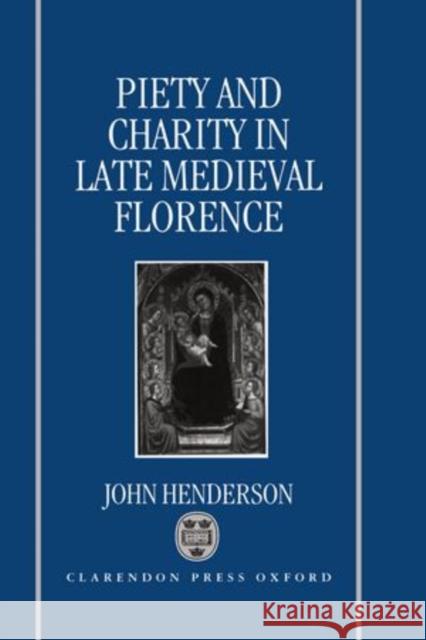Piety and Charity in Late Medieval Florence » książka
Piety and Charity in Late Medieval Florence
ISBN-13: 9780198202714 / Angielski / Twarda / 1994 / 568 str.
This book examines the relationship between the secular and sacred in late medieval Florence through the vehicle of the religious confraternity, one of the most ubiquitous and popular forms of lay association throughout Europe. Based on a wealth of new documentation Dr Henderson provides a fascinating account of the development of the major fraternities of the city in relation to other types of communal ecclesiastical institutions. The first part discusses in detail their devotional activities for living members, including the singing of lauds, self-flagellation, processions and dramatic presentations, as well as funerals and commemorative services for the dead. Secondly, this is one of the most detailed analyses of relief to the poor and sick in medieval Europe. He examines the complementary welfare roles of fraternities and hospitals, during both non-crisis years and the emergencies caused by plague and famine, all within the wider context of communal policy towards the poor. Taken together the two themes of this book, piety and charity, provide new evidence concerning the complex relationship between religion and society in both private and public life.
This book examines the complex relationship between religion and society in late medieval Florence. Based on a wealth of new documentation, this study reassesses the old `secularization' thesis of the Renaissance, and provides one of the most detailed analyses of poor relief in any city of late medieval Europe.











